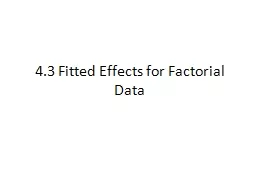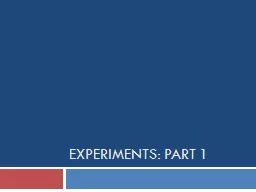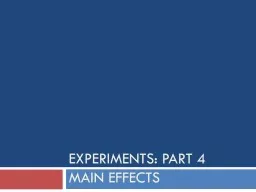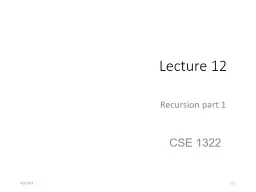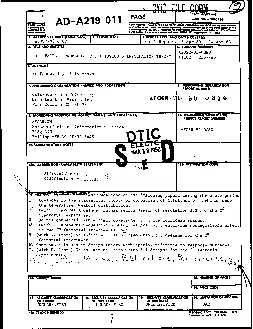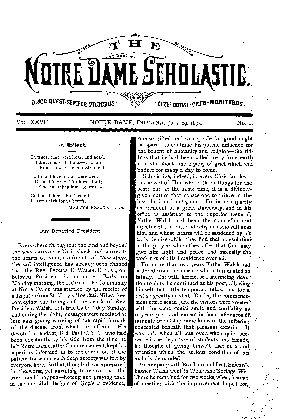PPT-4.3 Fitted Effects for Factorial Data
Author : natalia-silvester | Published Date : 2015-09-23
431 Fitted Effects for 2Factor Studies Factor A I levels Factor B J levels Equal replication n replicates in each treatment group Balanced design 8 Bauer Dirks
Presentation Embed Code
Download Presentation
Download Presentation The PPT/PDF document "4.3 Fitted Effects for Factorial Data" is the property of its rightful owner. Permission is granted to download and print the materials on this website for personal, non-commercial use only, and to display it on your personal computer provided you do not modify the materials and that you retain all copyright notices contained in the materials. By downloading content from our website, you accept the terms of this agreement.
4.3 Fitted Effects for Factorial Data: Transcript
Download Rules Of Document
"4.3 Fitted Effects for Factorial Data"The content belongs to its owner. You may download and print it for personal use, without modification, and keep all copyright notices. By downloading, you agree to these terms.
Related Documents

